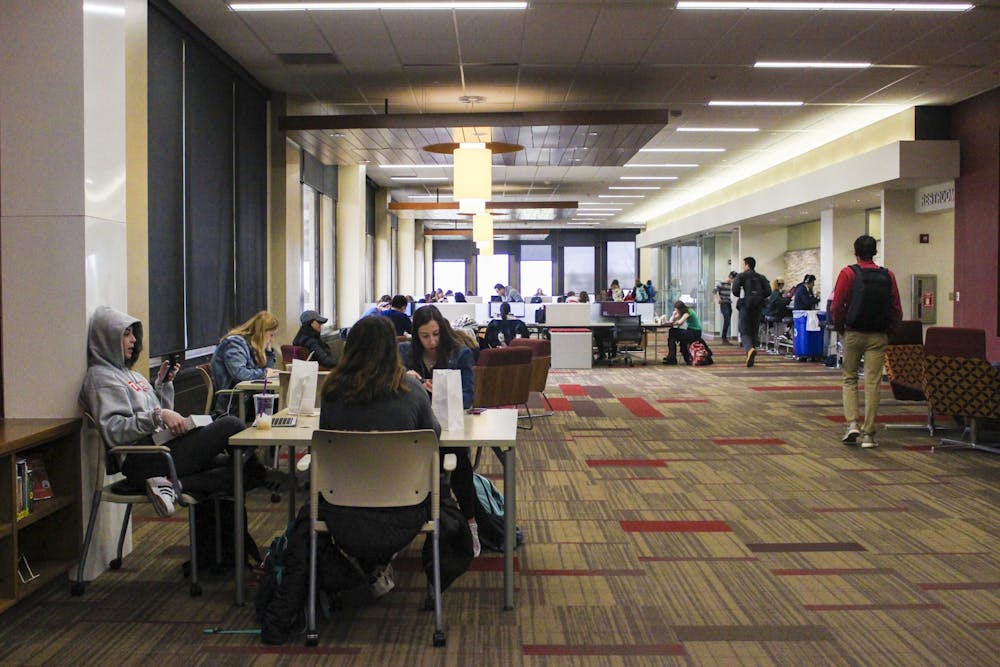As temperatures and daylight hours drop into the winter months, many experts are predicting a rise in depression rates correlated to seasonal affective disorder.
Spencer Dawson, associate director of clinical training with the IU Department of Psychological and Brain Sciences, said seasonal affective disorder, commonly called SAD, is classified as a type of depressive disorder. In order to classify it as a depressive disorder, Dawson said a person must experience feelings of sadness for most of the day every day for two or more weeks.
[RELATED: "IU experts say daylight saving time may increase energy consumption, bring mental health problems"]
Dawson said symptoms of SAD typically include disturbances in sleep including having a hard time sleeping or sleeping too much. Additionally, people may experience difficulties with concentration, fatigue, feelings of guilt or worthlessness and sometimes thoughts of death or suicide.
Dawson said another distinct characteristic commonly associated with SAD is “anhedonia” or a decreased interest or pleasure in activities one used to enjoy.
“What we see most classically is that anhedonia is occurring in the winter months,” Dawson said. “There are some cases of summer depression, but typically, what we’re looking at is a winter depression.”
When it comes to identifying the causes of SAD, Dawson points to biological factors, mainly circadian rhythm functions, as a driving factor. Circadian rhythms are 24-hour body clocks that control humans’ physiology and behaviors. In the winter, Dawson said circadian rhythms can be disrupted when there is less time in between sunrise and sunset. This in turn can affect alertness and sleep cycles. Dawson said that exposure to morning bright light is important to circadian rhythm regulations.
The effect of morning light on humans’ circadian rhythm functions is one reason Dawson said he and many other sleep experts are opposed to the “Sunshine Protection Act.” This act, which was passed in the Senate in March and has stalled in the House, would establish permanent daylight-saving time year-round for all states but Hawaii and most of Arizona.
Dawson said a permanent switch to daylight saving would disrupt circadian rhythms, forcing people to wake up in the biological night determined by their circadian rhythm. The American Academy of Sleep Medicine said in May that the group opposes the Sunshine Protection Act, instead expressing support for permanent standard time.
In addition to biological factors, Isabella Starvaggi, IU Ph.D. student in the clinical science program in the IU Department of Psychology and Brain Sciences, said there are several psychological factors that can contribute to SAD. She said these psychological factors include the tendency to be self-critical, feeling strong negative emotions about life and experiencing stressors.
[RELATED: "World Mental Health Day promotes resources and awareness for those facing mental health issues"]
According to the National Institute of Mental Health, SAD is more common in people living farther north, where there are shorter daylight hours in the winter. The National Institute of Mental Health also said SAD is more common in people with major depressive disorder or bipolar disorders. Starvaggi said women are typically twice as likely to be affected by depressive disorders like SAD.
“In general, women tend to be more prone to depression, anxiety and similar disorders, and that is also born out in seasonal affective disorder,” Starvaggi said.
IU freshman Gaby Rondel said she has heard conversations among her peers about SAD. She said she believes that, while her peers know SAD exists, they do not take the disorder seriously.
“I’ve heard a lot of people say, ‘the winter is cold and gray, and it makes me sad,’” Rondel said. “My friends and I had a conversation today about how we liked when the sun is out because it makes everything seem happier, and it helps us mentally and with productivity and stuff like that.”
According to the Mayo Clinic, one treatment for seasonal affective disorder includes light therapy, where a patient will sit several feet away from a light box that exposes them to bright light, aimed at mimicking natural outdoor light. Other treatments include psychotherapy, also called talk therapy, and medication.






